Sorong Green Tree Python For Sale | 1 Best green tree python for sale
$599.99
Buy Sorong Green Tree Python, is a beautiful and rare species of snake found in the West Papua region of Indonesia. They are typically 3-4 feet l
Sorong Green Tree Python for Sale: A Comprehensive Guide
The Sorong Green Tree Python (Morelia viridis) is one of the most stunning and fascinating reptiles available to both novice and experienced snake keepers. Known for their vibrant colors, arboreal nature, and captivating behavior, they are a highly sought-after species among reptile enthusiasts. This guide will take you through everything you need to know about the Sorong Green Tree Python, including care requirements, habitat setup, and where to find a “Sorong Green Tree Python for sale.” Whether you’re looking for a baby green tree python to raise or an adult, this content covers it all.
What is a Sorong Green Tree Python?
The Sorong Green Tree Python is a locality of Green Tree Pythons native to the Sorong Peninsula in West Papua, Indonesia. While all Green Tree Pythons are known for their vibrant green coloration as adults, those from Sorong have specific traits that set them apart from other localities.
Unique Characteristics of Sorong Green Tree Pythons
1. **Coloration**: The most distinguishing feature of the Sorong Python is its brilliant green body, often adorned with blue or turquoise speckling, a trait not commonly found in other localities. These blue markings can be subtle or quite pronounced, giving them a unique shimmer.
2. **Size**: On average, Sorong Pythons grow between 4.5 to 6 feet in length. Females tend to be larger than males, and they have slender, muscular bodies designed for an arboreal lifestyle.
3. **Temperament**: While Pythons are often known for their defensive nature, Sorong specimens are said to be somewhat calmer than other localities. However, they are still best suited for experienced keepers, as they can be quick to strike if they feel threatened.
4. **Tail Markings**: Pythons are known for the pale blue or white markings on their tails, which are more prominent in this locality than in others. These markings are particularly noticeable in juveniles but can persist into adulthood.
Why Choose a Sorong Green Tree Python?
The appeal of Pythons lies in their striking beauty, unique traits, and the challenge they present to reptile enthusiasts. Here are a few reasons why Sorong Green Tree Pythons make such desirable pets:
1. **Aesthetic Appeal**: Their vibrant green body, accented with blue or turquoise speckles, makes the Tree Python one of the most visually stunning snakes in the reptile world. Their striking appearance is often what draws collectors and keepers to this species.
2. **Arboreal Nature**: Pythons are primarily arboreal, meaning they spend most of their time in trees. Their coiled resting position on branches is iconic, and their tree-dwelling behavior makes them fascinating to observe in a well-designed, vertical enclosure.
3. **Exotic Appeal**: Owning a Python offers an element of exclusivity. While Green Tree Pythons are relatively common in the reptile trade, the unique characteristics of the Sorong locality make them highly prized among collectors.
4. **Longevity**: With proper care,Pythons can live for 15-20 years in captivity. This makes them a long-term commitment and a rewarding pet for dedicated reptile enthusiasts.
Where to Find Sorong Green Tree Pythons for Sale
When searching for a “ Python for sale,” it’s important to be diligent in finding a reputable source. Whether you’re looking for a baby green tree python or an adult, the quality of care and breeding plays a critical role in the health and well-being of the snake.
Reputable Breeders and Sellers
1. **Breeders**: Purchasing from a reputable breeder is one of the best ways to ensure you’re getting a healthy, captive-bred Sorong Green Tree Python. Captive-bred snakes tend to be healthier and better acclimated to life in captivity than their wild-caught counterparts. Reputable breeders will also be able to provide information on the snake’s lineage and health history.
2. **Wild-Caught vs. Captive-Bred**: If possible, always opt for captive-bred Sorong Green Tree Pythons. Wild-caught snakes often come with health problems, such as parasites or stress-related issues, and may be more difficult to acclimate to captivity.
3. **Health Guarantees**: Look for breeders who offer health guarantees and provide proper documentation. This can include information on the snake’s feeding habits, shedding history, and overall health. Always ask for photos and videos to verify the condition of the snake before making a purchase.
4. **Pricing**: The price of a Sorong Green Tree Python can vary significantly depending on the breeder, the snake’s age, and its specific traits. Baby Green Tree Pythons are generally less expensive than fully grown adults, but the price can range anywhere from a few hundred to over a thousand dollars, especially for specimens with rare markings or traits.
Baby Green Tree Python for Sale: What to Expect
Many reptile enthusiasts prefer to start with a baby Green Tree Python so they can watch the snake grow and undergo its dramatic color change. When searching for a “baby Green Tree Python for sale,” it’s important to know what to expect and how to care for these young snakes.
Color Transformation
One of the most exciting aspects of owning a baby Sorong Green Tree Python is witnessing its transformation. Baby Green Tree Pythons are typically born bright yellow or red, and over the course of several months to a year, they gradually shift to their adult green coloration. This process can take time, and each snake’s pattern and final colors will vary, adding to their unique appeal.
Housing for Baby Green Tree Pythons
Providing a suitable enclosure is crucial for the health and well-being of a baby Green Tree Python. As an arboreal species, they need vertical space to climb and perch. Here’s how to set up an ideal environment:
1. **Enclosure Size**: While Pythons are small, it’s essential to provide an enclosure with enough height to accommodate their climbing behavior. A tall, vertical terrarium is ideal.
2. **Temperature and Humidity**: Pythons thrive in environments with a temperature gradient between 80-88°F during the day and slightly cooler at night. Humidity levels should be maintained at around 50-70%, with regular misting to replicate their natural tropical habitat.
3. **Perches**: Include plenty of perches at varying heights to allow the snake to move around and feel secure. These can be branches or vines positioned throughout the enclosure.
4. **Hides and Foliage**: Pythons are shy and reclusive, especially when young. Providing plenty of foliage and hiding spots will help reduce stress and encourage natural behavior.
Sorong Green Tree Python Care Requirements
Taking care of a Green Tree Python requires attention to detail, as they are a delicate species that thrives in specific environmental conditions. Below are the key factors to consider when caring for your python.
Feeding
Pythons are carnivorous, and their diet consists primarily of small mammals and birds. In captivity, you’ll be feeding them rodents, such as mice or rats.
1. **Feeding Frequency**: Tree Pythons should be fed every 5-7 days, while adults can be fed every 10-14 days. Monitor your python’s body condition to adjust feeding intervals as needed.
2. **Prey Size**: The size of the prey should not exceed the width of the snake’s body at its widest point. Offering prey that is too large can cause digestive issues or stress.
3. **Frozen-Thawed vs. Live Prey**: It’s recommended to feed your Python frozen-thawed prey, as this reduces the risk of injury to the snake. If your python is reluctant to accept frozen-thawed prey, you can warm it slightly to mimic the body temperature of live prey.
Handling and Temperament
While Green Tree Pythons are known to be slightly more docile than other localities, they are still best admired from a distance. They are not a species that enjoys frequent handling.
1. **Minimize Handling**: Handling should be kept to a minimum, especially for baby Green Tree Pythons. If you must handle your snake, use a snake hook to gently lift it from its perch.
2. **Respect Their Space**: Green Tree Pythons are defensive by nature and will strike if they feel threatened. Approach your python slowly and avoid sudden movements that could startle it.
Health and Veterinary Care
Keeping your Green Tree Python healthy requires routine care and vigilance. Here are some key aspects of maintaining their health:
1. **Shedding**: Proper humidity is crucial for healthy shedding. If your python has trouble shedding, it may indicate that the enclosure is too dry. You can increase humidity levels by misting more frequently or adding a humid hide.
2. **Parasites**: Regularly inspect your python for signs of mites or other parasites. If you notice any abnormal behavior or physical signs, consult a reptile veterinarian.
3. **Respiratory Issues**: Green Tree Pythons are prone to respiratory infections if kept in enclosures that are too cold or too humid. Signs of respiratory distress include wheezing, mucus around the nose or mouth, and lethargy. If you notice any of these symptoms, seek veterinary care immediately.
Conclusion
Sorong Green Tree Pythons are an exceptional choice for reptile enthusiasts who are captivated by their beauty, arboreal behavior, and unique characteristics. Whether you’re looking for Green Tree Python to raise or an
adult, ensuring you purchase from a reputable breeder and providing proper care will result in a rewarding experience. With their longevity, striking appearance, and fascinating behaviors, these are truly a gem in the world of reptile keeping.
If you’re searching for a “ Green Tree Python for sale,” take your time to research breeders, understand their care needs, and prepare an appropriate habitat before bringing one home. These stunning pythons require attention to detail, but for the dedicated keeper, they are a truly rewarding species to own.

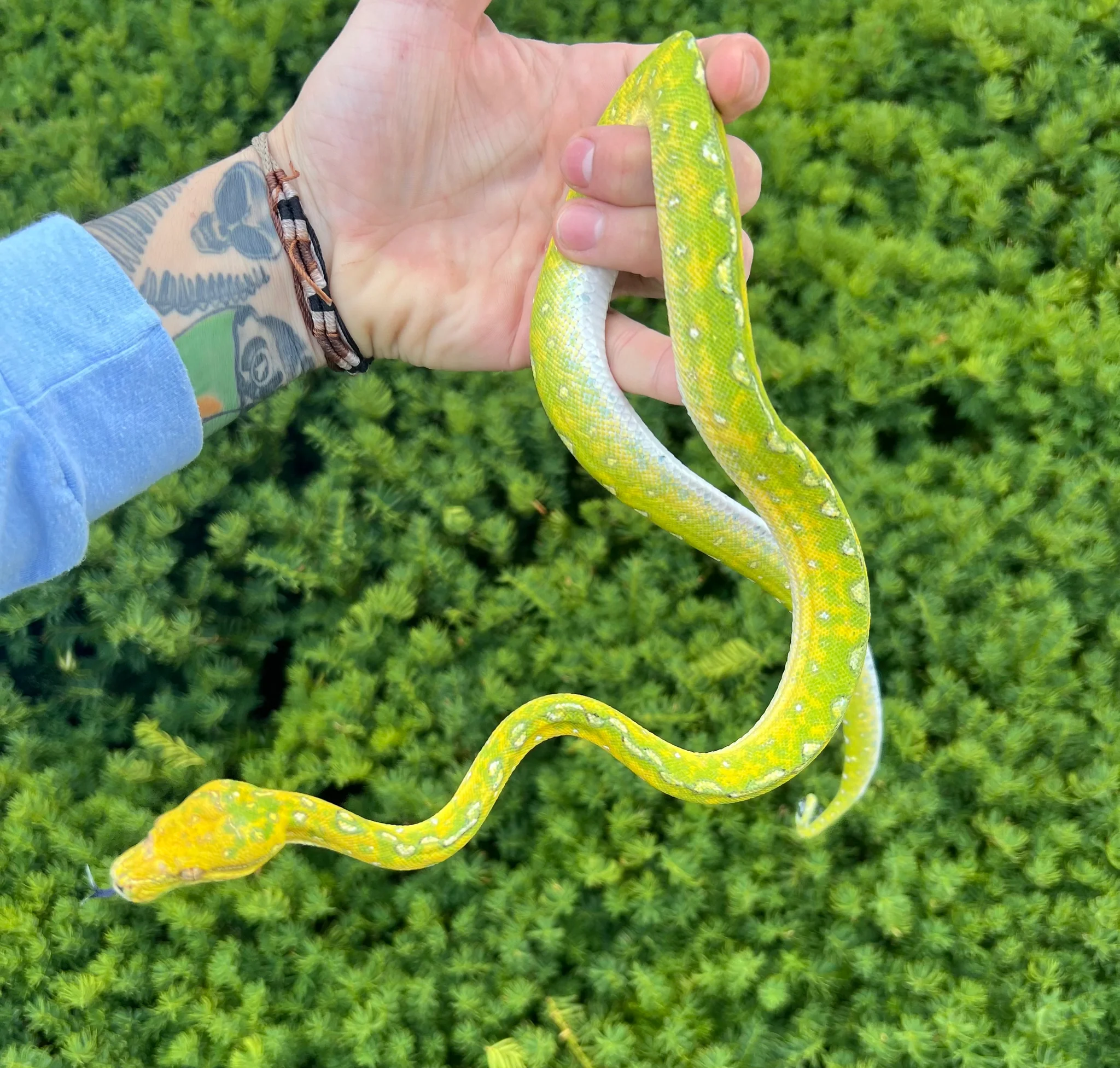
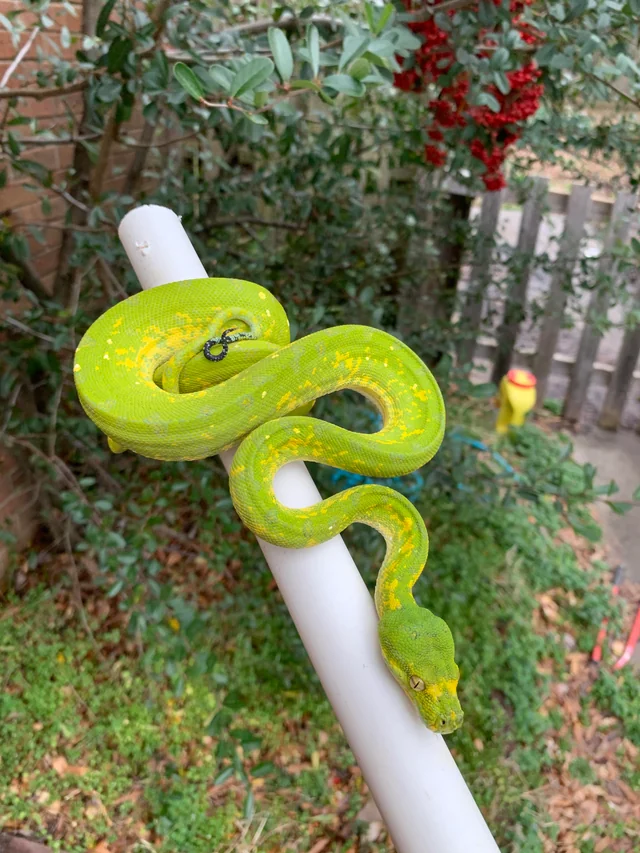

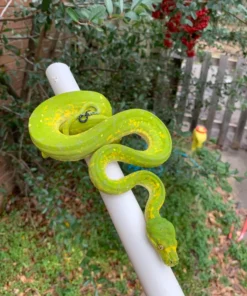

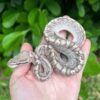
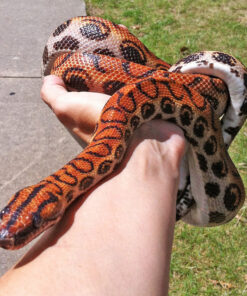
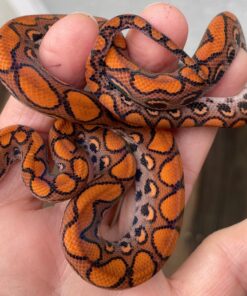
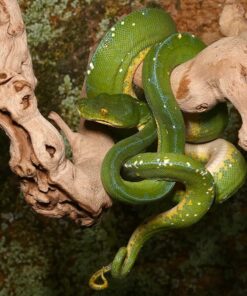
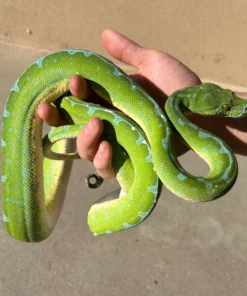
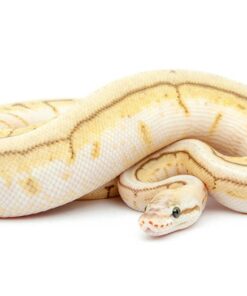
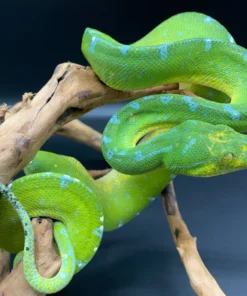

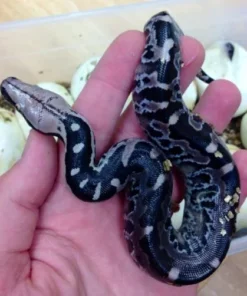



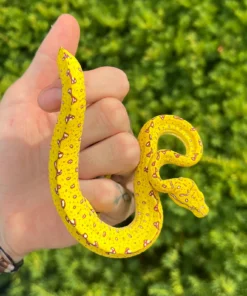

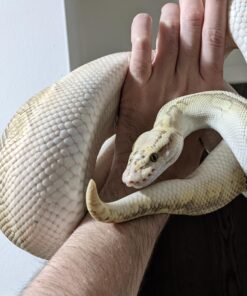

Reviews
There are no reviews yet.